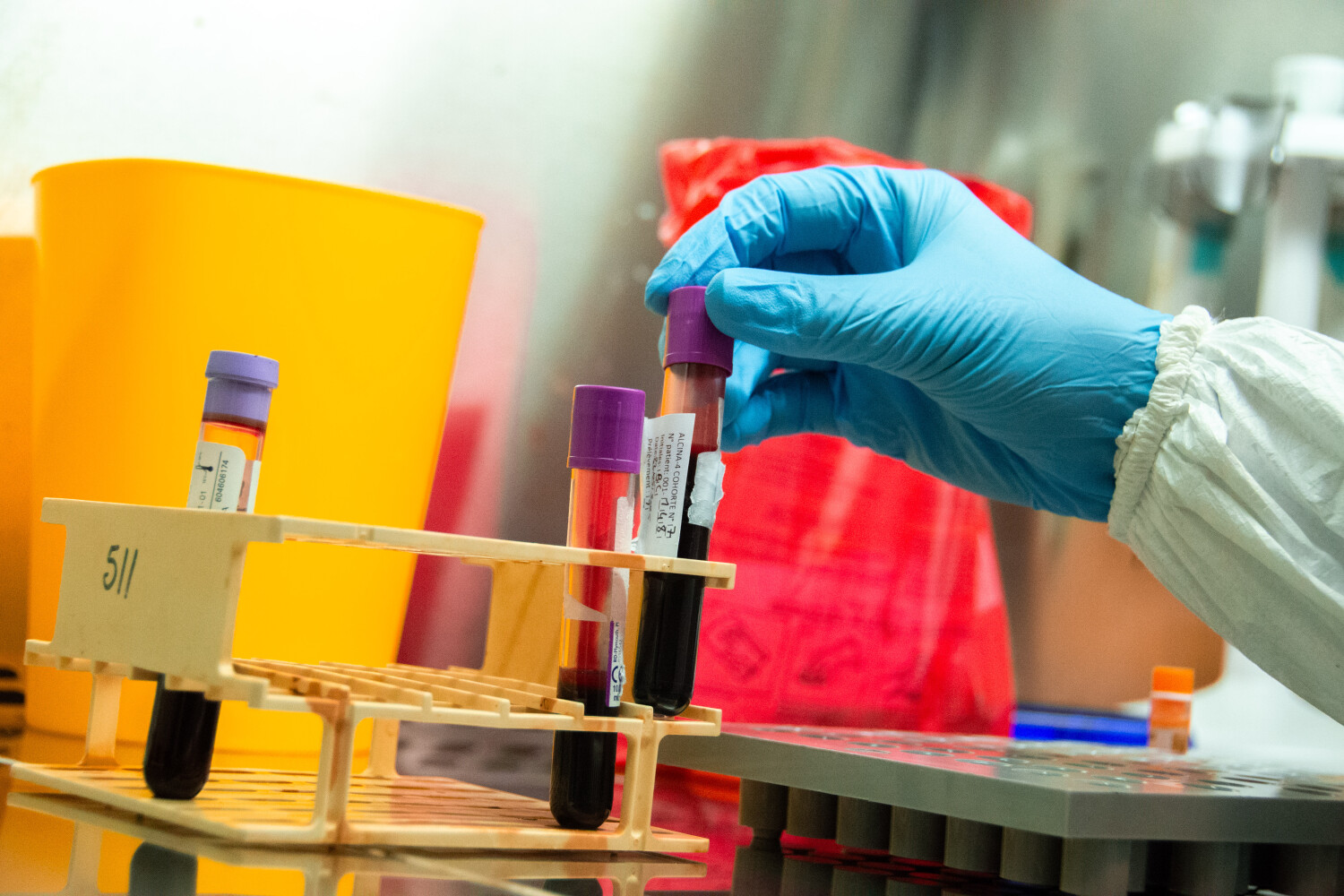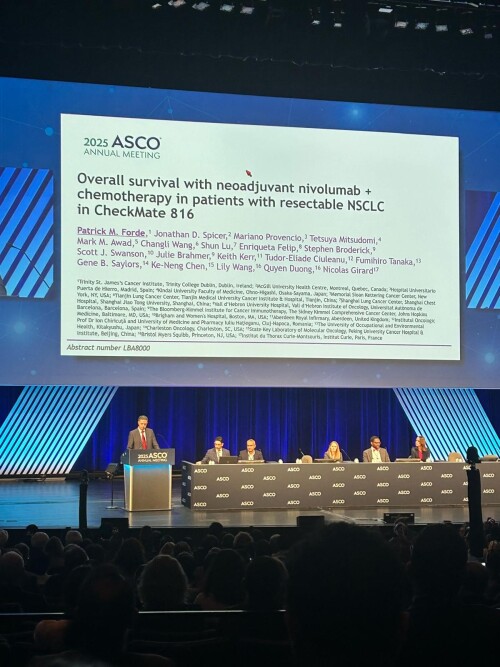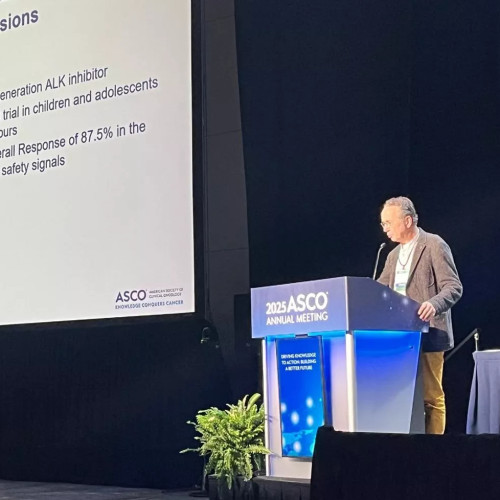“Thanks to Institut Curie's unique ecosystem, which enables real cooperation between researchers and physicians, we have developed expertise in the design and use of circulating tumor biomarkers to fight cancer. It has taken ten years, between developing a blood test in the laboratory to detect resistance mutations and the results of the SERENA-6 study. While the PADA-1 study, carried out in France with the Unicancer network, established proof of concept, SERENA-6 proves beyond doubt that our strategy of targeting resistance, with regular non-invasive blood sample monitoring and a change of treatment, results in tangible benefits for patients”, declares Prof. François-Clément Bidard, medical oncologist at Institut Curie's IHU Institute of Women's Cancers, Professor at the University of Versailles-Saint-Quentin and co-chair of SERENA-6 steering committee.
Hormone receptors-positive breast cancers account for the vast majority of breast cancers, and usually display a favorable prognosis. At the metastatic stage, the most common treatment consists of hormone therapy combining an anti-aromatase (which blocks activation of the estrogen receptor) with a cell proliferation inhibitor (CDK4/6 inhibitors, the “ciclibs”). However, in nearly 40% of cases, activating mutations in the estrogen receptor gene (ESR1) occur during treatment, leading to resistance to hormone therapy. These mutations can usually be detected in the blood several months before they cause the cancer to start growing again: the premise of the Institut Curie team's work is that using circulating tumor DNA opens up a “window of opportunity” to target these resistance mutations. To this end, one family of hormone therapy molecules is particularly useful: the SERDs (selective estrogen receptor degraders). For a long time, this family included only one compound (fulvestrant, for injection), but has recently seen the addition of new, more effective oral drugs (including camizestrant/AstraZeneca).
And this work is fully in line with the dynamics of the new University Hospital Institute (IHU) Women's Cancer Institute co-supported by Institut Curie, Inserm, PSL and launched in June 2024: a breakthrough program in women's support thanks to its multidisciplinary scientific and medical approach.
Experimental proof of concept.
The first proof of concept was published in 2022 with the pioneering French PADA-1 trial[1], designed by Prof. François-Clément Bidard, medical oncologist at Institut Curie and international expert in liquid biopsies. This French national academic study, led by the Unicancer/UCBG and GINECO groups, first explored the concept of intercepting ESR1 mutations once they become detectable. This trial showed a 39% reduction in the risk of cancer progression if the hormone therapy was changed to include fulvestrant injections to counter newly appearingESR1 mutations. Combined with good tolerance of this change, PADA-1 provided the first proof of the feasibility and potential benefit of this new strategy.
SERENA-6, the world's first registration trial to monitor circulating tumor DNA
In the light of the PADA-1 results, the SERENA-6 study uses the same concept of interception, but with a change of scale: this is a Phase 3, international, double-blind clinical trial in women with hormone-dependent metastatic breast cancer. SERENA-6 used a new oral SERD, camizestrant, which has previously demonstrated better efficacy than fulvestrant. In total, almost 3,000 patients participated in the mutation detection step during treatment, with Institut Curie being the largest enrolling site worldwide. During this first step, patients received their standard treatment of anti-aromatase combined with a CDK4/6 cell proliferation inhibitor, with blood samples taken every 2-3 months. 315 patients who developed an ESR1 mutation in the blood and had no disease progression were allocated to two groups: the standard group continued the same treatment (aromatase inhibitor and CDK4/6 inhibitor, unchanged), while the experimental group received camizestrant and CDK4/6 inhibitor (the latter unchanged). The trial therefore tested a change in oral endocrine therapy as soon as resistance appeared in the blood, ahead of disease progression.
SERENA-6 results demonstrate the efficacy of camizestrant and its excellent tolerability in this context of resistance mutation interception. Patients who received camizestrant saw their risk of cancer progression reduced by 56%, postponing the time to first re-growth by an average of 6 months. At 12 months, the progression-free survival rate was 60.7% for patients who received camizestrant compared to 33.4% for those who did not. At 24 months, progression-free survival was 29.7% compared to 5.4%. Analysis of the time to the second regrowth shows that the benefits remain over the longer term. Side effects of camizestrant have proved to be limited, with only 1.3% of patients discontinuing treatment due to side effects (a figure similar to that observed in the patients whose therapy was not ). Even more importantly, the benefit to patients of delaying regrowth is clearly established by the quality of life study: patients who remained on the standard treatment despite the ESR1 mutation saw their quality of life decline after around 6 months, compared with 23 months in patients who changed treatment.
The strategy of early monitoring and targeting of ESR1 mutations demonstrates its practical value here: early intervention can prevent or delay tumor regrowth and preserve quality of life.
These results therefore confirm two aspects:
- Large-scale confirmation of the success of the strategy initially developed in PADA-1,
- The efficacy and tolerability of camizestrant in this context - which should lead to approval for use of this new drug.
“These very positive results confirm the potential of our interception approach by detecting mutations in circulating tumor DNA. Now the research and clinical prospects are fascinating, as this strategy could be extrapolated to other situations and types of cancer, a the registration of new drugs“, concludes Prof. François-Clément Bidard.
|
Specialized in research into metastasis For over 15 years, teams at Institut Curie - particularly those in the Circulating Tumor Biomarkers (BTC) laboratory - have been exploring and deciphering the data that blood tests can provide. The aim is crucially to understand how these biomarkers could improve patient care, with many possible applications, whether as markers of therapeutic indication, monitoring residual disease, understanding the biology of metastases... and the teams have acquired world-renowned expertise in the field. Non-invasive biomarkers are an emerging class of biomarkers that offer unique advantages compared to tissue biopsy : Repeat sampling is possible, meaning treatment response and efficacy can be monitored, along with any resistance - as is the case in the PADA-1 and SERENA-6 trials. They provide extremely sensitive measurements, which is essential to monitoring minimal residual disease and detecting the early stages of cancer. The expertise developed at Institut Curie covers the whole field of research: from laboratory research (discovery of new blood biomarkers, development of new technical approaches, preliminary studies of analytical and clinical validity, etc.) to the design of original clinical trials demonstrating the value of these markers. |
[1] Read the press release, September 30, 2022: https://presse.curie.fr/etude-pada-1-un-suivi-par-adn-tumoral-circulant-ameliore-la-survie-de-femmes-atteintes-dun-cancer-du-sein-metastatique-hormono-sensible/?lang=fr



